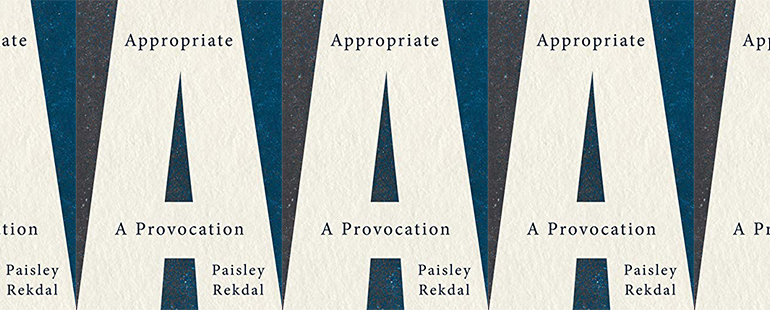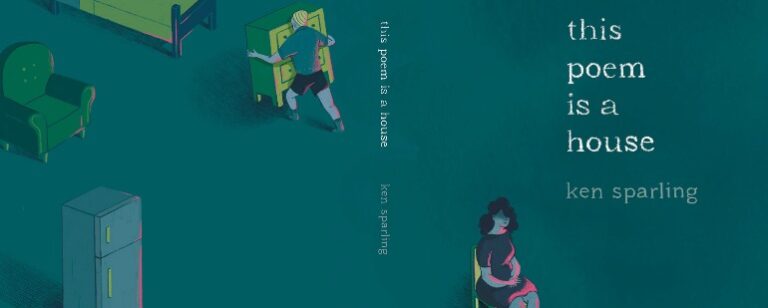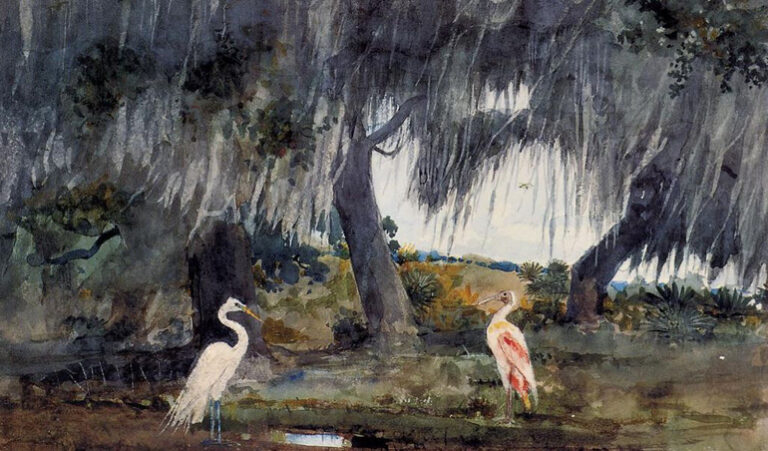“We are both the colonized and the colonizers”: An Interview with Paisley Rekdal

In the ongoing debate over cultural appropriation—fractious, and sometimes rigidified by clenched ideologies—Paisley Rekdal, in her recently published book, Appropriate: A Provocation, offers nuance. The act of cultural appropriation is not intrinsically political, Utah’s Poet Laureate argues, but is instead organic to the artistic process, every work part of a creative web that inescapably draws, consciously or unconsciously, from its predecessors; artists are constantly adapting existing forms and updating narratives to serve their original visions. But appropriation also risks being transgressive: in the United States, where contemporary fiction often explores deep questions of race, class, gender, and sexuality, writers who fashion characters outside their identities invariably surface deep questions about who has the power to shape public narratives of identity, putting any artist with vision into vulnerable territory; there’s no ethically safe nor politically unimpeachable ground.
In Appropriate, Rekdal documents the most violating types of appropriation, as when museums commandeer artifacts of a colonized people for profit. But she is primarily concerned with exploring the elusive distinction between investigation and invasion, borrowing and exploitation—a boundary that is risky to navigate when literature has historically perpetuated destructive stereotypes that disenfranchise racially and otherwise marginalized communities. While white writers who deploy racist tropes in their portrayal of characters of color must be called out, along with the publishing industry that abets them, Rekdal also warns that to insist characters of color be drawn only by writers of the same race can burden these writers and lead to in-group artistic policing that creates an inhibiting self-consciousness and a pressure to perform authenticity. Such expectations are particularly problematic given that we live in a complex world of intersectional being.
Rekdal, a professor of English at the University of Utah, explores this complicated subject matter with academic breadth and precision, analyzing artistic works that range from classical epic to contemporary hip-hop, but she takes a fluid approach more characteristic of the conflicted poet than the emphatic didact, attuned to paradox and exception. In her own poetry, Rekdal has appropriated boldly. Her 2019 collection, Nightingale, appropriates doubly to explore deep questions of gender, sexuality, and the traumatized body. She refashions Ovid’s Metamorphoses in a contemporary setting, while also speaking through personas beyond her direct experience. One poem portrays a post-accident quadriplegic woman searching her sexuality. In a second, a mother undergoes cancer treatment while her daughter changes gender. In the 2016 volume Imaginary Vessels, Rekdal conjures Mae West, who publicly transfigured American sexuality in part by appropriating African American artistic forms. For Rekdal, assuming another’s voice with integrity is a relational process; in Appropriate, this perspective is echoed by her decision to craft the book in epistolary form, each chapter a letter to an imagined, white man creative writing student who struggles with ethical and artistic questions about appropriation.
Rekdal recognizes, however, that being a biracial Chinese American affords her greater space than more racially marginalized writers may have to engage with problematically appropriative work. She explains that she teaches Ernest Hemingway’s “Indian Camp,” despite its gross flattening of a Native American character, and affirms William Faulkner’s capacity to evolve from drawing Black characters with stereotypical qualities toward creating more fully realized Black characters. Yet for other artists of color, she writes, “the question of creativity will always take second place to the enduring damage of colonialism.” The wounding presence of a racist stereotype may supersede any work’s arguable artistic merit. Artists of color and others whose identities are marginalized, however, also have the power to employ appropriation as a vehicle for self-assertion and reclamation. Rekdal cites hip-hop as perhaps the most globally visible example, in which artists from marginalized communities around the world draw from African American models to voice their struggles. And, in MFA programs across the country, any young poet of color who selects the sonnet or villanelle to tell a personal story is reclaiming a European form that has served colonial aims. In the universal realm of artistic creation, Rekdal claims, “We are both the colonized and the colonizers.”
Accepting that dual condition, the adventurous artist, regardless of race or other identity, must be willing to brave criticism. “If you are looking for comfort or vindication for your writing,” she writes, “you will never have it. You will have to choose for yourself, understanding that even sensitive literary portrayals may perpetuate racist systems.” Though the literary errors of politically troubling writers can offer cautionary guidance, no road map exists. Appropriate: A Provocation is thus indeed provocative, in the most positive sense, for insisting that all creative writers, both fledgling and veteran, search within to find their own ethics of literary invention.
Erik Gleibermann: Cultural appropriation has become such a fraught idea in public discourse because there appears to be little shared understanding of its meaning. It seems particularly charged when equated with usurpation, especially around race. In the opening to Appropriate: A Provocation, you ground your discussion in a quite complex explanation of the concept. Can you give us an overview?
Paisley Rekdal: I wanted to break apart the different types of appropriation, not just in a literary fashion, but in a day-to-day fashion. I began with the assumption that we’re all appropriating all the time and we’re encouraged to appropriate. It’s important to differentiate the appropriations we accept as adaptations or respectful approximations of identities that are different than the author’s own from more harmful forms of cultural appropriation. Obvious examples of harmful cultural appropriation can be found in museums where governments or art institutions go into other cultures, taking material objects and displaying them for the benefit of the institution. But it also happens when an author from a perceived dominant culture takes the motifs, stories, or even the actual identities of people and uses that for their own material gain. When we use the term “appropriation” both to cover adaptations of other literary works and also the creation of terrible, racist parodies or depictions of race that are used by an author for her own material benefit, we miss the nuances of the word itself and how we are all engaged in acts of literary appropriation. For instance, I talk with my students about the fact that if you’ve written a pantoum or a villanelle or a sonnet or rewritten a myth or a fairy tale, it’s also a form of appropriation.
EG: With a European form like a sonnet there can even be a reclaiming. So, if you come from, say, an African American poetic tradition, to use it can be a self-empowering act.
PR: It’s easier to see how African American writers are appropriating these forms back. There is less negative response around this because it is a form of reclamation. Some of the most interesting work on the sonnet now being done is by African American poets and women, who’ve often been the subject of the sonnet-gaze. Appropriation is not always the empowered taking from the disempowered. In my book, for example, I talk about the ways hip-hop has been translated worldwide. It’s one of the most obvious examples of many disempowered people across the world taking from a culture that is not their own to make a statement of how they see their own political struggles as being in common. No one is automatically and only subject to someone else’s gaze in literature. We are both the colonized and the colonizers.
EG: The question of what it means to write outside one’s identity is so complex because we all have multiple identities. Inevitably, we’re always going to be writing beyond our personal experience. A middle-class, Ivy-educated Black woman from Ithaca who’s writing about a Black family during the Reconstruction era in rural Mississippi is likely to have many creative challenges. So, would it be helpful to say fiction writers are working along a continuum or range of separateness when writing outside their identity, where on the one hand it can be a gross cultural appropriation that violates, and on the other, it’s a completely generative process congruent with your own identity?
PR: Your example is so interesting because the question of class and gender and race hints at one of the problems I have around the automatic assumption that writing outside of one’s immediate identity may not be possible because in order to write a good character you have to have an exact duplication of the self. What does a Harvard-educated Black woman who decides to write in the voice of a Black woman who’s from a sharecropping family in the south in 1910 have in common with her? Of course, it would be naïve to assume that there aren’t certain patterns of social expectations and social meaning around race that wouldn’t bind them. But you can also find infinite differences between these two identities that start to differentiate them. In writing, you don’t have to have exact duplication of identity between author and subject, but you do have to have an author with a capacious understanding of the ways in which social and historical realities move through and shape all identities. And I think that kind of awareness can be made available to all of us.
EG: I find your reflections skillfully make ample space for conflict and uncertainty. How do you strike the right balance between asserting a strong political critique of hurtful cultural appropriation and maintaining openness to work that might make us uncomfortable, but has artistic merit? You make the powerful point that some people have been so brutalized by the colonial effects of artistic appropriation that the political damage may always supersede literary questions.
PR: I will say openly that one of the reasons I am able to exist in this complex space is because I’m not one of the people who has been the most brutalized. As someone who reads to a lot of people as white, I have been able to traffic in spaces that have not put me on edge in the ways that put other people on edge. That is not to say I haven’t read portrayals of people like me that haven’t made me cringe. But oftentimes literary texts when they are effective move between something that makes me comfortable and something that makes me deeply uncomfortable.
EG: One example of the way you allow for conflict around the value of cultural appropriative art is the Araki Yasusada hoax in the 1980s, where a white man, Kent Johnson, assumed the identity of a non-existent Japanese poet. You were able to see the artistic merit in it despite the fakery. How did you negotiate that?
PR: It was an uncomfortable moment to teach Yasusada’s work in an Asian American literature class and realize that I preferred these poems written by the fake to some of the poems that were undeniably authentic. I had to ask myself why I preferred them. Is it possible to prefer something aesthetically, but also understand historically and culturally why it’s a violation? The way I was able to teach these poems was to start with what the poems are arguing and then what the poems were implying historically. The discussion in my classroom eventually became this: what is the American argument about Hiroshima? How is it that we may be trying to forgive ourselves via these poetic fakes? What do these poems teach us about white fantasies about race and culture? People often teach literature with the idea that these are texts to emulate not just as art, but as people. That’s ridiculous. I have friends who are film teachers who teach Birth of a Nation or Gone with the Wind. They’re not teaching these texts because we want you to admire everything about them.
EG: You write that “appropriation is never just a personal decision to write about what and whom I want to.” Can you explain why? And do you think engaging in it is inherently a risky choice for an artist?
PR: It’s risky on every level. You risk getting something wrong and offending people, and, by doing so, perpetuating certain racist tropes. And if you’re a person who needs approval psychologically for what you’ve done, you’re probably never going to get it. A lot of people, especially younger artists, are thinking that if they just follow a certain series of steps, they’ll manage to offend no one. But this isn’t possible: even well-meaning books can be criticized, if not for their portrayals, then for the fact that they are capitalizing on a system that’s so geared to support white authors.
With American Dirt, for example, one of the things that really struck me was how much Jeanine Cummins tried to avoid the charge of cultural appropriation by writing in excruciatingly pro-migrant ways. There was one moment where the main character says something like, “they were running like animals, but we were not animals. No one would think of us as animals.” The reader feels that Cummins was so horrified that someone could possibly read that as racist. In work that is well-meaning, but ends up being racist, it seems the author thinks the problem of the story is just depicting the scenario as accurately and as politically correct as possible. One of the problems with American Dirt, however, is that there’s no sense of a larger story. The question is what are the issues that are really being discussed in the novel? If American Dirt had avoided depicting the trauma of migration and raised the novel to the level of asking what it means to migrate, to change, to leave the state of being one person and becoming another, I suspect fewer people would be complaining about it. But because there was an insistence on thinking about the horrific details of rape and murder and flight, not the larger metaphoric or political question about what constitutes migration, we ended up spending more time arguing about whether these literary depictions were realistic or sympathetic. And then we also have to worry about the publication system in which Cummins was working.
EG: What do you think about the argument that given how deeply race is woven into American history, all American literature, whether consciously or not, concerns race on some level and that in 21st century multiracial America, white fiction writers who do not portray characters of other races are actually erasing them? That if you write a naturalistic scene that takes place in a Baltimore shopping mall or during spring break in Miami, characters of color need to be included?
PR: Your argument calls to mind Toni Morrison’s argument that even novels that were not thinking about race are thinking about race. We live in an extremely diverse society. As America becomes increasingly multiracial, to write only about what you know as a white writer would naturally encompass some diversity, from ability to race to gender to sexuality. Just as a matter of sheer literary survival you have to write about other people because it would start to look really weird if you didn’t. You have a story in an urban setting and every character is white? Even if you mean it respectfully, it becomes a blindness that ends up duplicating another kind of erasure.
EG: You make a compelling statement that cuts to the heart of why a unilateral rejection of race-based literary appropriation is problematic. “To insist that a writer must be from the same group identity as the voice of the author has a dangerous flip side to it: while it warns off writers from blithely taking on subject matters outside their own experience, it also implicitly warns writers within the same group identity that an authentic experience of that identity does exist—to the group at least—and can and may be policed from within.” What responses have you had from other writers of color or queer writers about this idea?
PR: I have had that conversation with a number of writers of color. There have been writers of color who have gently or not so gently called out ways in which this policing has happened from within. There were two anthologies of poetry that were recently under fire on social media, one because a woman in a Chicana anthology was being outed by a Chicana writer who said that woman is not actually Chicana because her mother wasn’t Mexican. And I saw another anthology around disability poetics where people were complaining that the editors were not really representative of the disability community. These concerns around authentic representation create profound and unanswerable anxieties around what “authentic” means, for writers of color especially. It also raises the question about what “representation” must finally entail. To perform authenticity for everyone feels like you’re being devoured from within. We’re not a world that is filled with anthologies devoted to the writing of disability poetics. So, to take one down for not perfectly representing all of the identities that lie within such a broad category of humanity seems like shooting yourself in the foot. I’ve had conversations with younger writers of color who say to themselves, If I write truthfully about my community and it doesn’t come off well, have I just sold us all down the river? There is this sense that there’s a social responsibility that looms large on the shoulders of writers of color that is a very destructive force. It duplicates the idea that white writers might already have of writers of color, which is that they essentially stand in for an entire group of people. In that, underrepresented writers don’t get to have an assumed freedom of the creative imagination. Everyone has to perform, whether to white audiences and editors, or to their own communities. Nothing is going to shut down a diversity of opinion and a diversity of representation faster than that.
EG: You support white writers portraying characters of color if they consciously undertake some committed practices to deepen their racial self-awareness and stretch beyond a white-centered gaze, using W.E.B. Dubois’s idea of double consciousness. What internal and craft work can white writers do to be ready to portray across race, and, more generally, for writers to depict characters well outside their identities?
PR: The very first thing I would ask a student is to consider how much they are reading in the literary traditions that form the identities that they are interested in writing about. The second question I’d ask is how that character’s particular identity matters to the story they want to tell. In other words, why does this character need to possess this particular identity? The third thing is to imagine how identity is a series of choices that are elevated or suppressed depending on the situation we’re in. It’s not simply about trying to portray an interior emotional life in which somehow race is stripped out of the equation entirely. One of the most sympathetic acts we can do is to understand how [and] in what ways race has mattered to the person they are depicting on the page. And finally, with the benefit of a diverse workshop, you want people who come from these communities you are writing about to read your work. Creating in isolation in this moment is not a good impulse.
EG: You wrote the book using epistolary form, offering guidance as a creative writing instructor to an imagined white mentee who has sought your insight. Why did you decide to use this approach and how did it shape your conclusions?
PR: I thought it would make the book more conversational. It was really important to imagine the person as a white male because there are certain things that I would not have to explain to a person of color. The epistolary form also made me, hopefully, more empathetic. If I were to write just as a teacher to other scholars and teachers, the essays would have been far more didactic and less likely to reveal anything about myself personally or about my own ambivalence. In scholarship you’re not supposed to be ambivalent, but I am ambivalent about appropriation. I wanted to reveal that human, questioning side of myself. Letters allow you more complication.
This piece was originally published on July 22, 2021.


